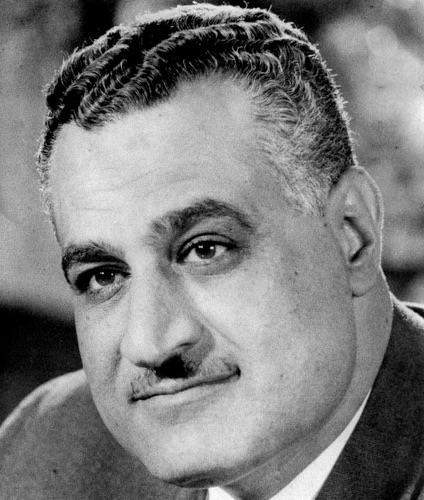21 Gamal Abdul Nasser and Non-Alignment
Alam Payind and Melissa McClimans
One of the most prominent figures in resisting imperial control was Egypt’s president, Gamal ‘Abdul Nasser. He was at the forefront of the worldwide movement to resist the domination of the superpowers, called non-Alignment, which denied alliance with either the U.S.’s Containment Policy, or the Soviet Union’s systems of influence. He gained renown at the international conference on the subject in Bandung, in 1955, as a leader in non-Alignment and postcolonial sovereignty.
Key Figure: Gamal ‘Abdul Nasser:

Nasser’s policies (Nasserism):
– Pan-Arabism
– Positive Neutrality: This was his non-alignment strategy, neutrality without indifference. This means the sovereign reserves the right to be involved in world affairs without taking sides, necessarily.
– He diverged from Marxist socialism in that he did not abolish private property, or attack systems which protected the rich. Also, considering that Egyptian society considered family as a bedrock, and its religious views were very steadfast, he did not implement anti-religious or family reforms.
Nasser was incredibly popular as he represented Egyptian national identity and independence in many ways. Firstly, because of his role in the revolution of 1952 that overthrew the European-backed monarchy but also because he the first Egyptian to rule Egypt since the time of the Pharoahs, and his humble village background gave him additional authenticity. His credibility was further strengthened when he nationalized the Suez Canal, standing up to both Israel and European powers. Even when Egypt lost the war to Israel in 1967, and lost the Sinai Peninsula, he continued to be considered a hero.
As a way to implement this ideology in his country, and bolster regional solidarity, he developed pan-Arabism to counter the pressures from the West and the Soviets. It was an aspect of Arab socialism which was also gaining traction among Arab intellectuals. Syria and Egypt were united briefly under this policy, and his direction. His main policies were pan-Arabism, and Positive Neutrality. The latter was his non-alignment strategy, neutrality without indifference. The government reserves the right to be involved in world affairs without taking sides, and to intervene on issues deemed appropriate.
